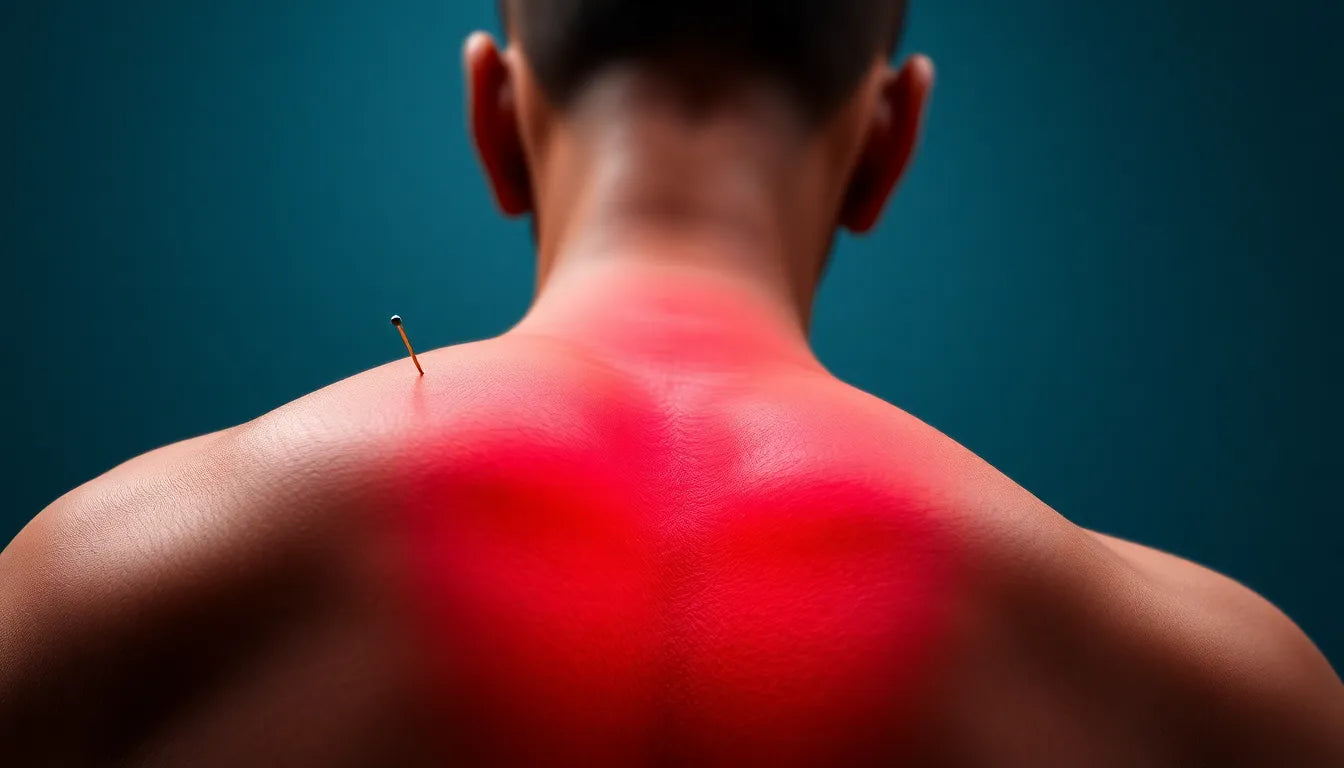Dealing with a herniated disc can be a daunting experience, but understanding what it is and how it occurs can be the first step toward finding relief. A herniated disc, often referred to as a slipped or ruptured disc, occurs when the soft inner gel of a spinal disc pushes through a tear in the tougher outer layer. This can lead to irritation of nearby nerves, resulting in symptoms such as back pain, numbness, or weakness in the limbs. Recognizing these symptoms early and seeking conservative treatment options is crucial to prevent the condition from worsening.
Understanding the importance of conservative treatments
When faced with a herniated disc, many people worry about the possibility of surgery. However, it's important to note that the majority of cases do not require surgical intervention. In fact, initial management typically focuses on non-invasive and conservative methods that aim to alleviate symptoms and promote healing. These treatments are designed to reduce pain and inflammation, improve mobility, and prevent further injury, all while avoiding the risks associated with surgery.
Conservative treatments provide a foundation for recovery, offering a range of options that can be tailored to individual needs. From physical therapy and medication to lifestyle modifications and home remedies, these approaches can effectively manage symptoms and improve quality of life. By prioritizing non-invasive methods, patients can often achieve significant relief and return to their daily activities without the need for more aggressive interventions.
In the following sections, we will delve deeper into various conservative treatment options available for managing a herniated disc. By exploring these methods, you can gain a comprehensive understanding of how to approach this condition with confidence and clarity. Whether it's through physical therapy, medication, or lifestyle changes, there are numerous ways to address the discomfort and limitations caused by a herniated disc, paving the way for a healthier, pain-free life.
Physical therapy as the cornerstone of recovery
Physical therapy plays a pivotal role in the recovery process for those dealing with a herniated disc. It serves as the foundation of conservative treatment, focusing on strengthening the back muscles, enhancing flexibility, and improving posture. A well-structured physical therapy program can significantly reduce pain and prevent the recurrence of symptoms.
Therapists often employ a range of exercises tailored to individual needs, such as stretching, core strengthening, and low-impact aerobic activities. Techniques like McKenzie exercises, which involve specific movements to centralize pain, and stabilization exercises that focus on core muscles, are commonly used. These exercises not only alleviate current symptoms but also help in preventing future disc issues by promoting a healthy spine alignment.
The benefits of physical therapy extend beyond pain relief. By improving mobility and muscle strength, it allows individuals to return to their daily activities with greater ease and confidence. Moreover, physical therapy empowers patients with knowledge about their condition, equipping them with techniques to manage symptoms independently.
Effective medication and pain management
In managing a herniated disc, medication can provide essential relief, particularly in the early stages of treatment. Over-the-counter pain relievers like ibuprofen and acetaminophen are often the first line of defense, helping to reduce inflammation and alleviate discomfort. These medications can be effective in managing mild to moderate pain, allowing individuals to engage in physical therapy and other activities.
For more severe pain, healthcare providers might prescribe stronger medications, such as muscle relaxants or narcotics, albeit for short-term use due to potential side effects. It's crucial for patients to consult with their healthcare provider to ensure the appropriate use of medications and to discuss any potential interactions with other treatments.
In addition to medication, other pain management strategies, such as transcutaneous electrical nerve stimulation (TENS), can be beneficial. This non-invasive treatment uses electrical impulses to reduce pain perception, offering an alternative for those seeking non-drug options.
Adapting lifestyle and activities
Adjusting daily activities and lifestyle choices is essential for managing a herniated disc effectively. While it may be tempting to avoid movement altogether, staying active within comfortable limits is crucial for recovery. Engaging in gentle activities, such as walking or swimming, can enhance circulation and promote healing without placing undue stress on the spine.
It's also important to avoid activities that exacerbate pain, such as heavy lifting or prolonged sitting. Ergonomic adjustments, like using supportive chairs and maintaining proper posture, can significantly reduce strain on the back. Incorporating regular breaks and stretching exercises into your routine can further aid in preventing stiffness and discomfort.
Applying heat and cold therapy
Heat and cold therapy are simple yet effective methods for managing pain and inflammation associated with a herniated disc. Cold therapy, using ice packs, can help reduce swelling and numb acute pain, especially in the initial stages following an injury. It's best applied for short periods, typically 15-20 minutes, several times a day.
As the acute phase subsides, heat therapy can be introduced to relax muscles and improve blood flow to the affected area. Warm baths, heating pads, or warm compresses can be used to alleviate muscle tension and promote relaxation. Alternating between heat and cold therapy can provide comprehensive relief and support the healing process.
Considering epidural steroid injections
For individuals experiencing persistent pain that does not respond to other conservative treatments, epidural steroid injections may be considered. These injections deliver corticosteroids directly into the epidural space around the spinal nerves, aiming to reduce inflammation and alleviate pain.
While not a first-line treatment, epidural injections can provide relief for those with severe symptoms, particularly when combined with physical therapy. It's important to discuss the potential benefits and limitations with a healthcare provider, as the effects can vary among individuals.
By exploring these conservative treatment options, individuals with a herniated disc can find effective ways to manage their condition and improve their quality of life. With the right approach, many can achieve significant relief and return to their daily activities without the need for surgical intervention.
Exploring alternative and complementary therapies
In addition to traditional conservative treatments, alternative and complementary therapies can play a significant role in managing a herniated disc. Practices such as yoga, pilates, massage, and acupuncture are increasingly recognized for their potential benefits in pain management and overall well-being.
Yoga and pilates focus on enhancing flexibility, strength, and posture, which are crucial for maintaining spinal health. These practices often involve gentle stretching and controlled movements that can alleviate tension and reduce pain, making them suitable for individuals with a herniated disc. Additionally, massage therapy can help relieve muscle tension, improve circulation, and promote relaxation, contributing to pain relief and recovery.
Acupuncture, a traditional Chinese medicine technique, involves inserting thin needles into specific points on the body. It is believed to stimulate the body's natural healing processes and reduce pain. While more research is needed to fully understand its efficacy, many individuals report positive outcomes when incorporating acupuncture into their treatment plan.
Surgery as a last resort
While conservative treatments are effective for most individuals with a herniated disc, surgery may be considered in cases where symptoms persist despite exhaustive non-invasive efforts. Severe pain, progressive neurological deficits, or significant loss of function may necessitate surgical intervention.
Common surgical procedures for herniated discs include microdiscectomy and laminectomy. A microdiscectomy involves removing the portion of the disc that is pressing on the nerve, while a laminectomy involves removing part of the vertebra to relieve pressure on the spinal cord or nerves. These surgeries are typically minimally invasive and aim to provide relief by directly addressing the source of nerve compression.
It's important to remember that surgery is usually considered only after all other options have been exhausted and should be discussed thoroughly with a healthcare provider to weigh the potential risks and benefits.
Frequently Asked Questions
What should I avoid doing with a herniated disc?
It's crucial to avoid activities that exacerbate pain, such as heavy lifting, prolonged sitting, and any movements that cause discomfort. Maintaining proper posture and making ergonomic adjustments can also help prevent further strain on the spine.
How long does it take to recover from a herniated disc without surgery?
Recovery time varies, but most individuals experience significant improvement within 4-6 weeks with conservative care. Consistent adherence to treatment plans, including physical therapy and lifestyle modifications, can expedite recovery.
When should I see a doctor for a herniated disc?
If you experience severe pain, numbness, tingling, or loss of function in your limbs, it's important to seek medical attention promptly. Early intervention can prevent the condition from worsening and facilitate better outcomes.
Can lifestyle changes really make a difference?
Yes, lifestyle changes can significantly impact recovery and long-term spinal health. Incorporating ergonomic adjustments, maintaining a healthy weight, and staying active within limits can aid in managing symptoms and preventing future issues.
Are there any risks associated with epidural steroid injections?
While epidural steroid injections are generally safe, there are potential risks, including infection, temporary pain increase, and, in rare cases, nerve damage. It's important to discuss these risks with a healthcare provider to make an informed decision.
By understanding and exploring these various treatment options, individuals with a herniated disc can make informed decisions about their care and work towards achieving a pain-free life. With the right approach, many can find relief and return to their daily activities without the need for surgical intervention.
Sources
- Mayo Clinic. (2023). "Herniated disk - Symptoms and causes." Mayo Clinic.
- Cleveland Clinic. (2023). "Herniated Disc: Overview, Treatment, and Prevention." Cleveland Clinic.
- WebMD. (2023). "Herniated Disc: Symptoms, Causes, and Treatment." WebMD.
- Sciatica.com. (2023). "Understanding Herniated Disc and Treatment Options." Sciatica.com.
- Cuellar Spine. (2023). "Herniated Disc Treatment Options." Cuellar Spine.
- MidAmerica Orthopaedics. (2023). "Managing Herniated Discs: Treatment and Recovery." MidAmerica Orthopaedics.
- NYU Langone Health. (2023). "Herniated Disc in Adults: Treatments." NYU Langone Health.


















